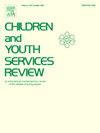为受家庭虐待影响的儿童和青年实施的“一起治愈”方案的影响
IF 1.7
2区 社会学
Q1 FAMILY STUDIES
引用次数: 0
摘要
背景:受家庭虐待影响的儿童由于其创伤经历,日后出现与心理健康有关的困难的风险更高。制定创伤知情的支持计划,旨在发展儿童的情感理解,可以提供一种有效的早期干预方法。目的评估创伤知情干预对受家庭暴力影响的儿童的影响。通过跟踪测试前后情绪意识的变化来衡量干预效果。重点放在分娩方式和儿童年龄的任何相互作用的影响。参与者和设置。总共有327名来自英国的5-16岁的儿童参与了这项研究,他们参与了“一起治愈”项目。该项目于2021年6月至2023年6月期间在学校、青年组织和早期干预服务机构开展。方法儿童在节目前后分别填写情绪意识问卷,对幼儿的情绪分辨能力、情绪言语分享能力和情绪不隐藏能力进行测试。结果干预后,“一起治愈”项目显著提高了儿童区分情绪、不隐藏情绪和口头分享情绪的能力。此外,有效性因年龄而异,干预是以1-1为基础还是以群体为基础。干预似乎对1-1岁的孩子和5 - 10岁的孩子更有效。结论“一起愈合”项目能有效提高儿童的情绪意识。这可能是由于创伤知情因素允许建立安全和共同调节的关系,并且孩子们在感到不安全时发展了他们的身体和大脑如何协同工作的意识。本文章由计算机程序翻译,如有差异,请以英文原文为准。

The impact of the healing together programme for children and young people affected by domestic abuse
Background
Children affected by domestic abuse have a heightened risk of later mental health related difficulties due to their traumatic experiences. Development of trauma-informed support programmes which aim to develop a child’s emotional understanding could offer an effective early intervention approach.
Objectives
The aim was to measure the impact of a trauma-informed intervention for children affected by domestic abuse. Intervention effectiveness was measured by tracking changes in emotional awareness at pre and post-test. Focus was placed on any interaction effects of delivery-method and age-of-child.
Participants and Setting.
In total, 327 children from the U.K. aged between 5–16 years who were involved in the Healing Together programme participated in the study. The programme took place within schools, youth organisations and early intervention services, between the dates of June 2021-June 2023.
Methods
The children completed the Emotional Awareness Questionnaire to measure Differentiating Emotions, Verbal Sharing of Emotions and Not Hiding Emotions before and after the programme.
Results
Immediately post-intervention, the Healing Together programme significantly increased children’s ability to differentiate emotions, not hide emotions, and verbally share emotions. In addition, the effectiveness varied by age, and whether the intervention was delivered on a 1–1 or group-basis. The intervention appeared to be more effective on a 1–1 basis and for 5–10-year-olds.
Conclusions
The Healing Together programme was effective in increasing children’s emotional awareness. This may have been due to the trauma-informed elements which allowed for a safe and co-regulating relationship to be established and the children to develop an awareness of how their body and brain work together when they are feeling unsafe.
求助全文
通过发布文献求助,成功后即可免费获取论文全文。
去求助
来源期刊

Children and Youth Services Review
Multiple-
CiteScore
6.30
自引率
6.10%
发文量
303
期刊介绍:
Children and Youth Services Review is an interdisciplinary forum for critical scholarship regarding service programs for children and youth. The journal will publish full-length articles, current research and policy notes, and book reviews.
 求助内容:
求助内容: 应助结果提醒方式:
应助结果提醒方式:


